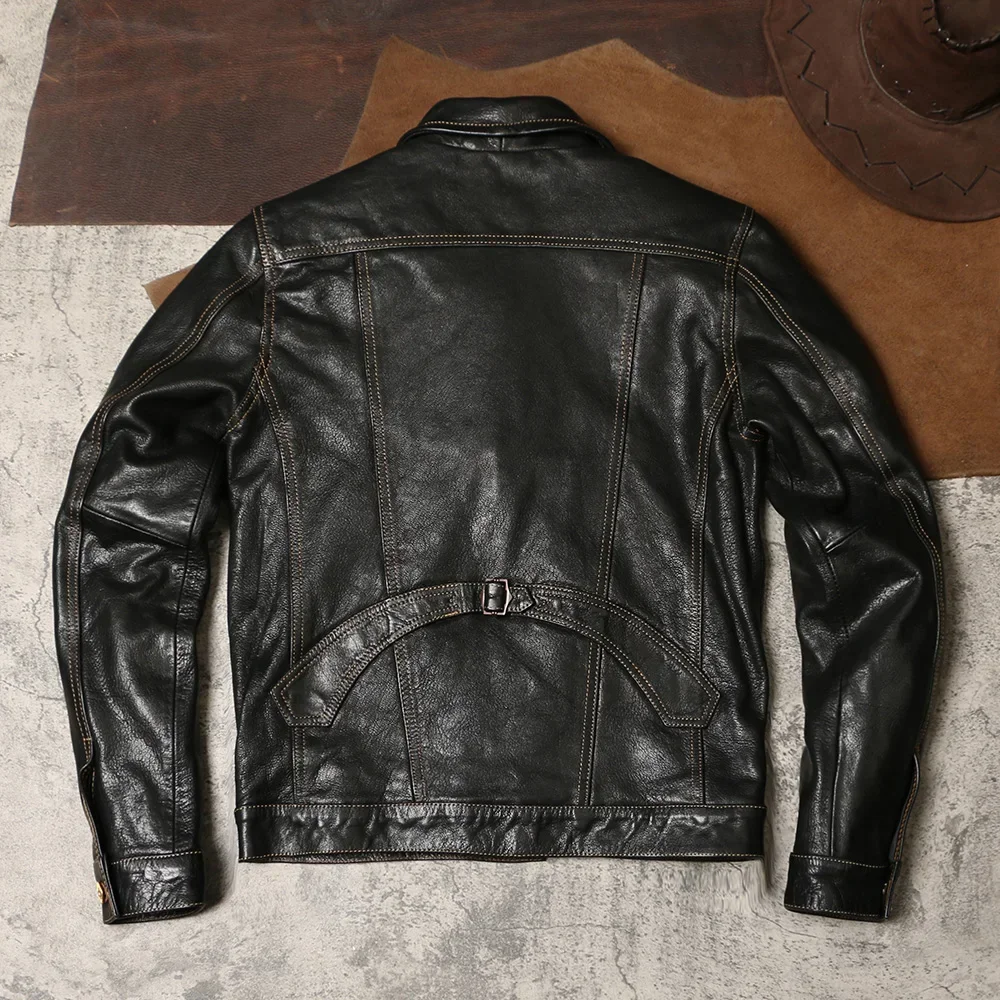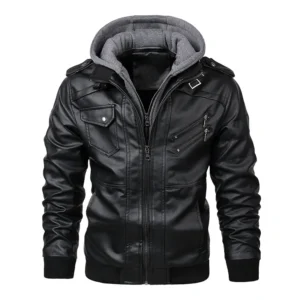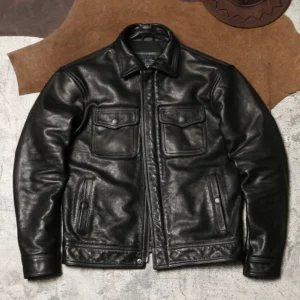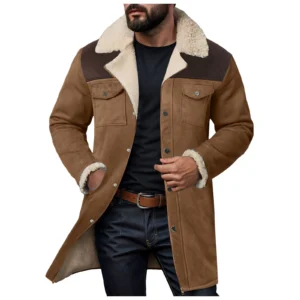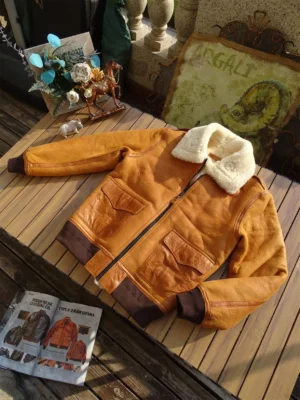A well-crafted leather coat is more than just a garment—it’s an investment that, with proper care, can last for decades while maintaining its elegance and character. Whether you’ve recently purchased a premium leather coat or are looking to revitalize an existing favorite, this comprehensive guide will walk you through everything you need to know about maintaining your leather coat’s beauty and longevity.
Understanding Your Leather Coat: The Key to Proper Maintenance
Before diving into specific care techniques, it’s essential to identify what type of leather your coat is made from. Different leathers require different care approaches, and using the wrong products can potentially damage your investment.
The foundation for understanding leather coat care begins with knowing your specific leather type:
Full-grain leather: The highest quality leather available, featuring natural markings and developing a beautiful patina over time. It requires regular conditioning but rewards with increasing character as it ages.
Top-grain leather: Slightly more processed than full-grain, with some natural markings removed. It’s durable and slightly more stain-resistant but still needs consistent maintenance.
Suede and nubuck: These leathers have a napped (fuzzy) finish and require special brushes and protectants. They’re particularly vulnerable to water and oil stains.
Patent leather: Features a high-gloss finish that needs specific cleaning products to maintain its shine without causing cracks.
Bonded leather: A composite material made from leather scraps that needs gentle care to prevent peeling and cracking.
Faux/vegan leather: Synthetic alternatives that typically resist stains better but may crack over time without proper care.
You can identify your leather type by checking the manufacturer’s label or noting physical characteristics. Modern men’s leather shearling coats and other varieties each have distinct textures and appearances that help determine their maintenance needs.
Leather finishes also affect care requirements:
– Aniline: Minimally treated, showing natural markings with high absorption (needs frequent conditioning)
– Semi-aniline: Light protective coating while maintaining natural appearance
– Pigmented: Most durable with added color layer and protective coating
Essential Leather Care Toolkit: Products and Supplies You Need
Assembling the right care products is crucial for maintaining your leather coat. Quality matters more than quantity—a few excellent products will serve you better than many mediocre ones.
Your essential leather care toolkit should include:
Microfiber cloths: For gentle cleaning, applying products, and buffing (avoid paper towels which can scratch leather)
Leather-specific brushes: Soft-bristled for smooth leathers, suede brushes for napped leathers
pH-balanced leather cleaners: Formulated specifically for leather to avoid drying or damaging the material
Leather conditioners: Choose appropriate formulations for your specific leather type
Water/stain repellents: Protective products that create an invisible barrier against moisture and stains
Cedar hangers: Wide, contoured hangers that support the coat’s shape without creating pressure points
When selecting products, look for conditioners containing beneficial ingredients like lanolin or beeswax, and avoid those with alcohol, silicone, or harsh chemicals. Understanding the different types of leather cleaners for coats will help you make informed decisions about which products to purchase.
Daily Preventative Care: Habits That Extend Your Coat’s Life
The most effective leather care strategy is prevention. Simple daily habits can dramatically extend your coat’s life and minimize the need for intensive restoration efforts.
After each wear:
1. Hang your coat on a quality hanger and allow it to air out for at least 30 minutes
2. Gently wipe away any dust or surface soil with a soft cloth
3. Address any moisture exposure immediately by blotting (never rubbing) with a clean, dry cloth
Environmental protection is crucial:
– Keep leather away from direct sunlight, which can fade and dry the material
– Maintain distance from direct heat sources like radiators, fireplaces, or car heaters
– Avoid exposing leather to extreme humidity, which can promote mold growth
When unexpected weather strikes, knowing how to waterproof your leather coat becomes essential. If caught in rain or snow, blot excess moisture when you return home, then allow the coat to dry naturally at room temperature—never use a hairdryer or other heating device to speed drying.
For minor scuffs encountered during daily wear, gently buff with a soft cloth. The natural oils from your clean fingertips can often address small marks on finished leathers.
Seasonal Cleaning: Step-by-Step Guide to Deep Cleaning Your Leather Coat
While daily care prevents buildup, seasonal deep cleaning revitalizes your leather coat and prepares it for extended wear or storage. The frequency depends on wear patterns and exposure to elements, but most coats benefit from thorough cleaning 1-2 times per year.
Before cleaning:
1. Check for colorfastness by applying cleaner to a small, inconspicuous area
2. Dust and brush the entire coat to remove surface particles
3. Identify any stained areas requiring special attention
For standard leather coats:
1. Apply leather cleaner to a damp cloth—never directly to the leather
2. Work in small sections using gentle circular motions
3. Avoid oversaturating the leather
4. Wipe away cleaner with a separate damp cloth
5. Allow to dry completely away from direct heat or sunlight
For lined coats, take special care to keep the lining dry during the cleaning process, as moisture can become trapped between layers and cause damage.
Cleaning your leather coat at home is possible with the right approach, but always defer to professional cleaning if you’re uncertain or if the coat is particularly valuable.
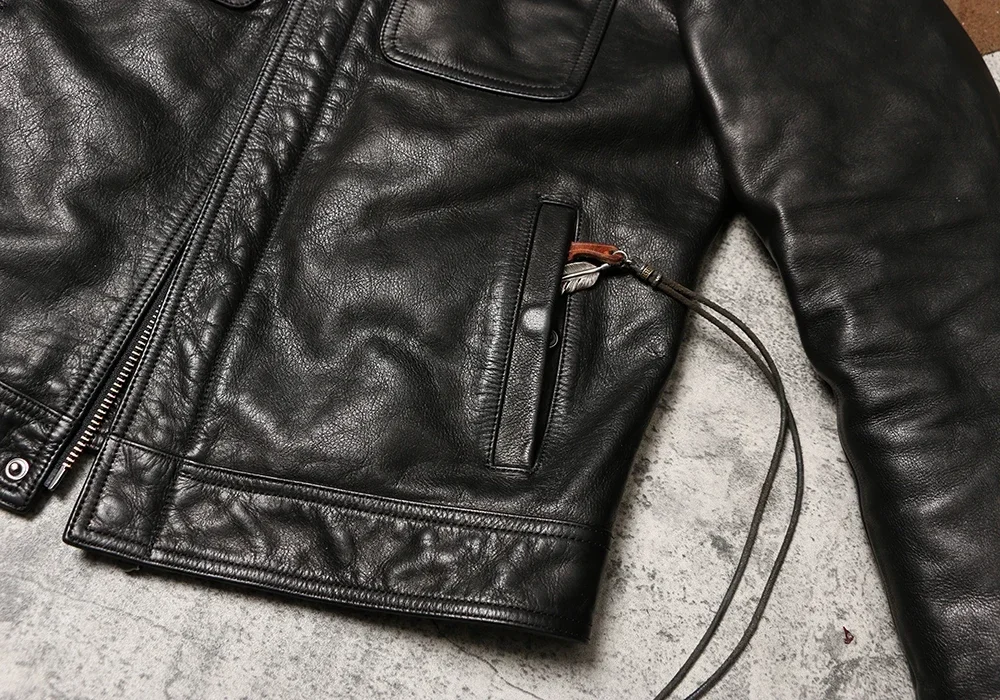
Essential Conditioning: Restoring Moisture and Suppleness
Conditioning is perhaps the most crucial aspect of leather maintenance. Without regular conditioning, leather loses its natural oils, leading to dryness, stiffness, and eventually cracking—damage that can be irreversible.
The purpose of conditioning is to:
– Replace natural oils lost through wear and cleaning
– Maintain flexibility and suppleness
– Protect against environmental damage
– Enhance the leather’s natural appearance
For optimal conditioning:
- Begin with clean, dry leather
- Select a conditioner appropriate for your specific leather type
- Apply a small amount to a soft cloth
- Work in using gentle circular motions, focusing on one section at a time
- Allow the conditioner to absorb for the time recommended by the manufacturer (typically 15-30 minutes)
- Gently buff away any excess with a clean cloth
Conditioning frequency depends on climate and wear frequency. In dry climates or with frequent wear, condition every 3-4 months. In moderate conditions with occasional wear, 1-2 times per year may suffice.
Learning expert tips on leather coat conditioning and understanding how to properly oil your leather jacket can dramatically extend its lifespan. Remember that under-conditioning leads to dryness and cracking, while over-conditioning can cause saturation and oil buildup.
Addressing Common Stains and Spills: Quick Response Guide
Quick action is your best defense against permanent staining. Different substances require specific approaches:
| Stain Type | Response Method |
|---|---|
| Water spots | Allow to dry naturally, then condition if marks remain |
| Rain marks | Blot gently, allow to dry, then use a leather cleaner if needed |
| Oil/grease | Blot excess (don’t rub), apply cornstarch/talc to absorb, brush away after several hours |
| Ink | Seek professional help immediately; home remedies often spread the stain |
| Food spills | Remove solid matter, blot liquids, clean with leather cleaner |
| Salt stains | Mix equal parts water and white vinegar, apply with damp cloth, follow with conditioner |
For black leather coats, immediate stain treatment is even more critical as discoloration is often more visible. Always test any cleaning solution on an inconspicuous area first.
Prevention strategies include:
– Applying appropriate leather protectants seasonally
– Being mindful when eating or drinking while wearing your coat
– Carrying a small leather emergency kit for immediate stain response
Mens Leather Coat, Mens Long Leather Coat
Price range: $225.22 through $235.58 Select options This product has multiple variants. The options may be chosen on the product pageMens Black Leather Coat, Mens Leather Coat
Price range: $181.52 through $197.20 Select options This product has multiple variants. The options may be chosen on the product pageMens Brown Leather Coat, Mens Leather Coat
$846.94 Select options This product has multiple variants. The options may be chosen on the product pageMens Shearling Coat, Mens Sheepskin Coat
$888.08 Select options This product has multiple variants. The options may be chosen on the product page- Price range: $96.28 through $130.88 Select options This product has multiple variants. The options may be chosen on the product page
Mens Shearling Coat, Mens Sheepskin Coat
$2,257.19 Select options This product has multiple variants. The options may be chosen on the product page
Professional Leather Care: When to Seek Expert Help
While regular maintenance can be handled at home, certain situations call for professional intervention:
- Severe or set-in stains that haven’t responded to home treatment
- Color restoration for faded areas
- Structural damage including tears, split seams, or broken linings
- Hardware issues with zippers or buttons that require specialized repair
- Vintage or high-value coats deserving expert attention
When selecting a leather care professional:
– Look for specialists with experience specifically in leather garment care (not just furniture)
– Request references or examples of previous restoration work
– Ask about their process, including products used
– Confirm pricing and timeframe expectations upfront
Even the finest styling for brown leather outerwear can’t disguise damage from improper care, so don’t hesitate to seek professional help when necessary.
Professional restoration typically costs more than regular maintenance but is far less expensive than replacing a quality leather coat.
Long-Term Storage: Protecting Your Coat When Not In Use
Proper storage is essential during off-seasons to prevent damage and maintain your coat’s condition.
Before storage:
1. Clean thoroughly to remove all soil and body oils
2. Condition to ensure the leather doesn’t dry out during storage
3. Allow 24-48 hours for products to fully absorb
Storage environment should be:
– Cool (50-70°F/10-21°C)
– Dark (to prevent fading)
– Moderately humid (40-50% humidity)
– Well-ventilated
Do:
– Use a breathable cotton garment bag
– Opt for wide, padded hangers that support shoulders
– Leave space between garments for air circulation
– Check periodically during long storage periods
Don’t:
– Use plastic bags or covers which trap moisture
– Fold leather coats for extended periods
– Store in attics, basements, or garages with temperature fluctuations
– Place heavy items on top of stored leather
For comprehensive expert guide to long-term leather coat storage, consider adding cedar elements to deter pests and absorb excess moisture.
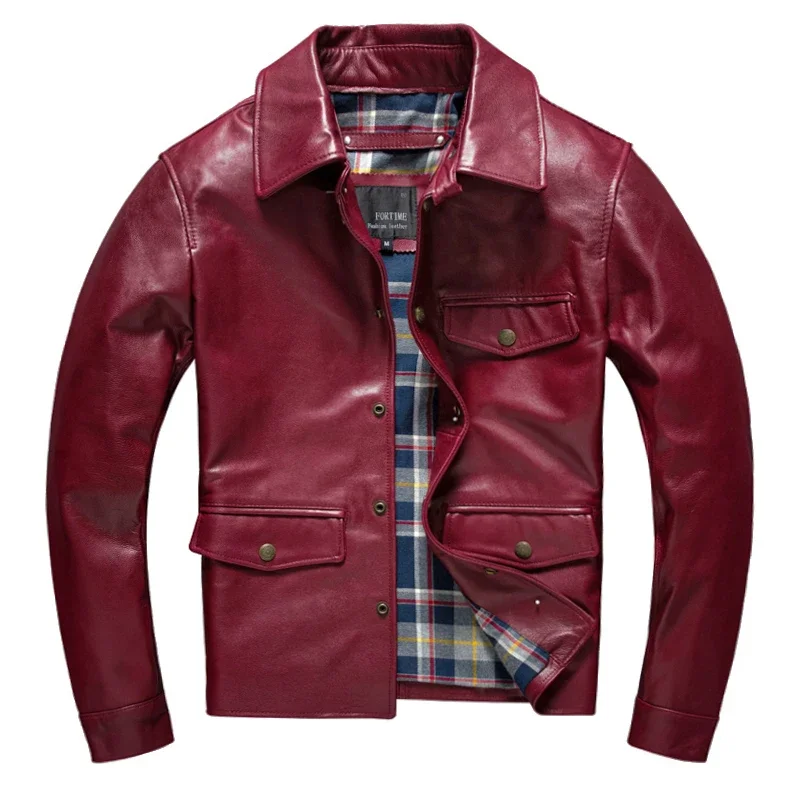
Reviving a Neglected Leather Coat: Restoration Techniques
Even with significant neglect, many leather coats can be revived with patience and proper techniques.
Start by assessing the damage:
– Dryness and stiffness (potentially reversible)
– Surface mold or mildew (often treatable)
– Fading or dullness (may be improved)
– Cracks or peeling (may be mitigatable but rarely fully repairable)
For severely dry leather:
1. Clean gently using appropriate leather cleaner
2. Apply a quality leather conditioner, slightly heavier than normal application
3. Allow to absorb completely (24-48 hours)
4. Apply a second conditioning treatment if needed
5. Repeat this process every few weeks rather than over-conditioning at once
For surface mold:
1. Take the coat outdoors to avoid spreading spores
2. Brush away visible mold with a soft brush
3. Wipe with a cloth dampened with diluted alcohol solution
4. Allow to dry completely
5. Condition thoroughly as alcohol will dry the leather
Understanding how to prevent leather coat cracks can help restore your coat to wearable condition, though some damage may remain as part of the coat’s character and history.
Special Considerations for Different Coat Styles
Different leather coat designs face unique maintenance challenges:
Long Trench Coats
– Prevent creasing by hanging properly with adequate space
– Pay special attention to bottom edges which often contact car seats and chairs
– Consider occasional professional pressing for severe wrinkles
– Metro Cloak’s long leather coat styles benefit from hanging at full length without folding
Motorcycle and Aviator Jackets
– Clean and lubricate zippers and metal hardware to prevent corrosion
– Apply leather cream to collar areas that contact skin more frequently
– Address high-friction areas (underarms, elbows) with more frequent conditioning
– Balance maintaining protective qualities with aesthetic concerns
Formal Coats
– Focus on maintaining structured shoulders with proper hangers
– Consider cedar hangers to help maintain shape
– Protect inner linings which may be delicate fabrics
– More frequent light cleaning to maintain professional appearance
Distressed or Vintage-Look Coats
– Embrace natural aging while preventing structural damage
– Use lighter conditioning to maintain the intentional aged appearance
– Focus on structural integrity rather than trying to eliminate all signs of wear
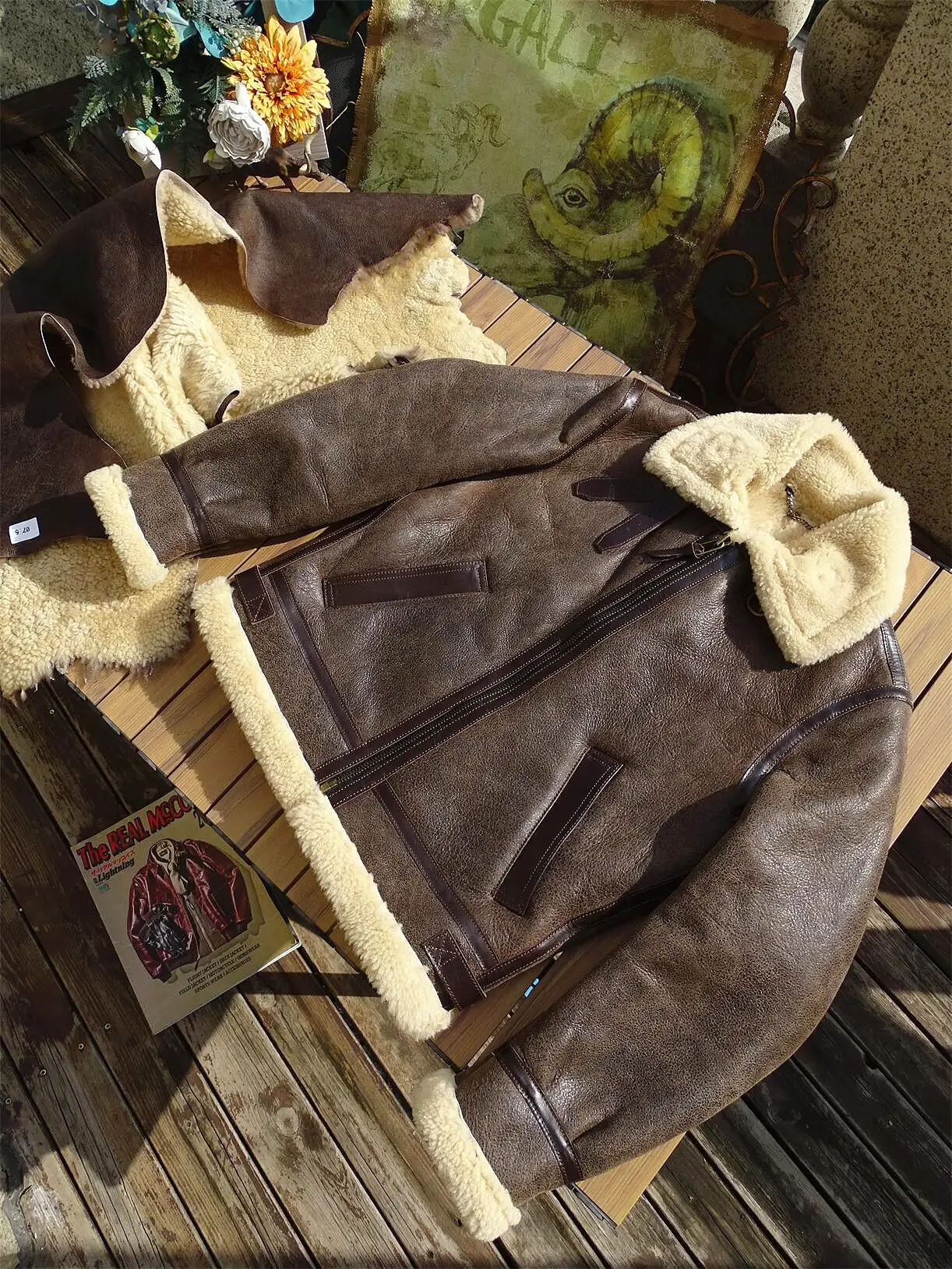
Extending the Aesthetic Life: Addressing Wear Points and Cosmetic Issues
Even with excellent care, certain areas of leather coats tend to show wear sooner:
Common wear points requiring special attention:
– Cuffs and sleeve edges where friction is constant
– Collar and lapels that contact skin oils and facial products
– Pocket openings from frequent hand insertion
– Elbow areas from bending and resting on surfaces
For minor cosmetic repairs:
– Use matching leather creams for color touch-ups on scuffed areas
– Apply edge kote or similar products to reseal and refinish worn edges
– Clean and lubricate hardware regularly with appropriate metal products
– Reinforce interior stitching at stress points before they fail
The key is balancing preservation with the natural aging process. High-quality brown leather coats develop a unique patina that adds character, and over-restoring can actually diminish this desirable quality.
For comprehensive guidance on maximizing your coat’s lifespan, explore the definitive guide to protecting leather jackets which covers advanced protection techniques.
Frequently Asked Questions About Long-Term Leather Care
Can leather coats be truly waterproofed?
Leather can be made highly water-resistant but not completely waterproof without compromising breathability. Regular application of quality leather protectant provides significant resistance to light moisture.
How can I remove persistent odors from my leather coat?
For general odors, airing out the coat in fresh (not direct) sunlight helps. For stronger smells, placing the coat in a large container with baking soda, activated charcoal, or coffee grounds nearby (not directly on the leather) can absorb odors over several days.
Is it possible to restore color to faded areas?
Yes, with leather-specific dyes and colorants, though matching the exact shade can be challenging. Professional restoration offers the best results for significant color correction.
Can a leather coat be altered or resized?
Limited alterations are possible by skilled leather specialists, but major resizing is difficult without compromising the garment’s integrity. Shearling coats in particular require specialized knowledge for alterations due to their complex construction.
How should I handle temperature transitions to prevent damage?
Allow your coat to gradually adjust to new temperatures rather than moving directly from extreme cold to heat. Hang the coat and allow it to naturally reach room temperature before storing.
By following these comprehensive care guidelines, your premium leather coat can remain a stunning wardrobe centerpiece for decades, developing character while maintaining its fundamental quality and style. Remember that consistency in care matters more than occasional intensive treatments—your leather coat will reward your regular attention with lasting beauty and performance.

